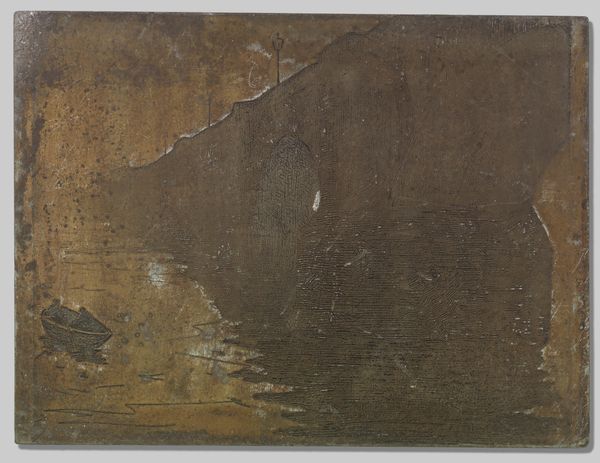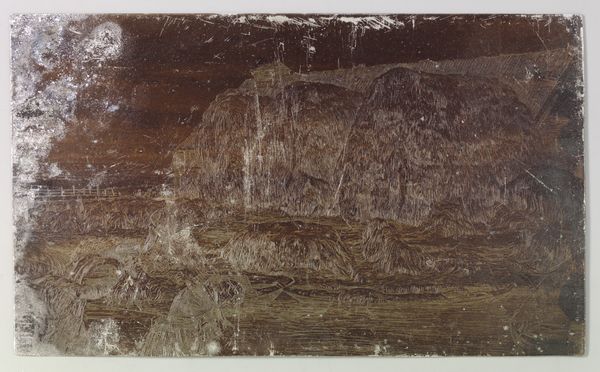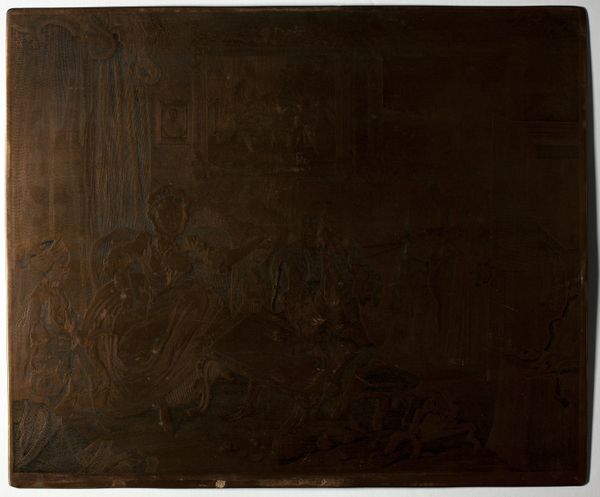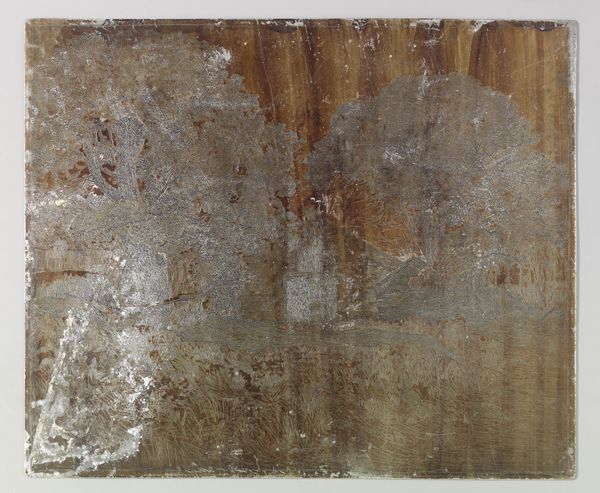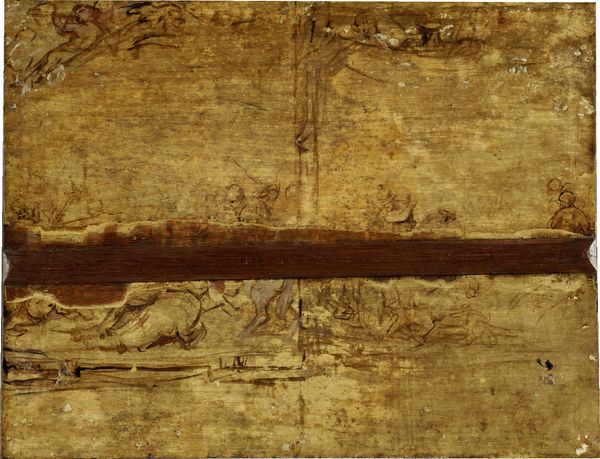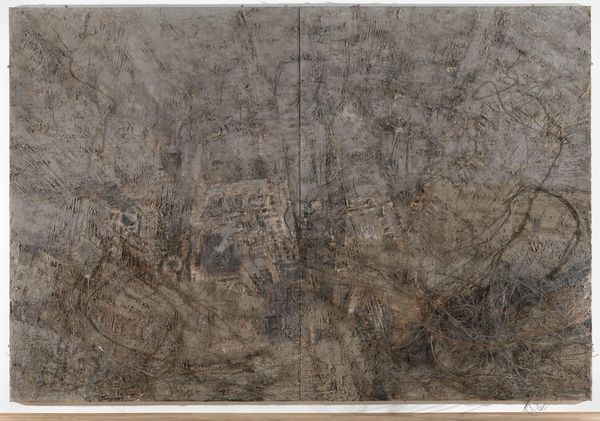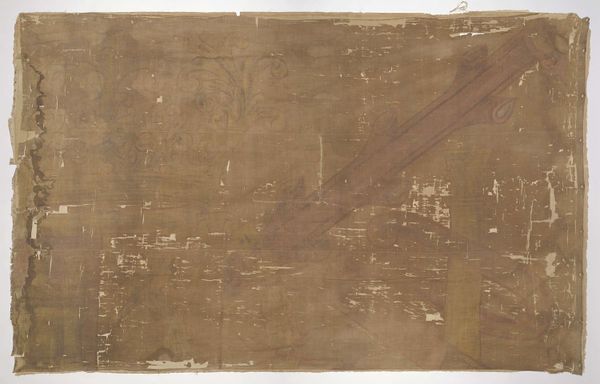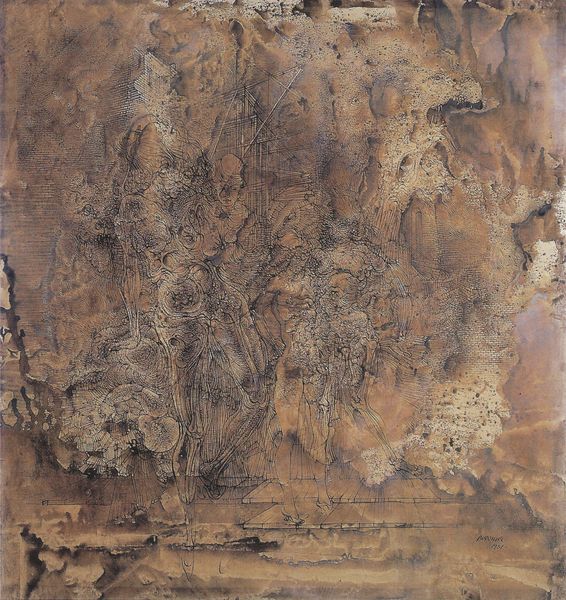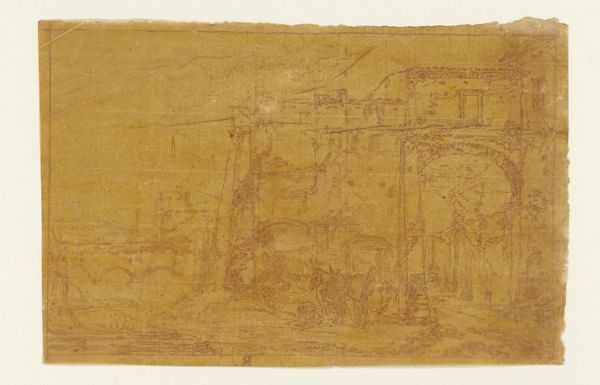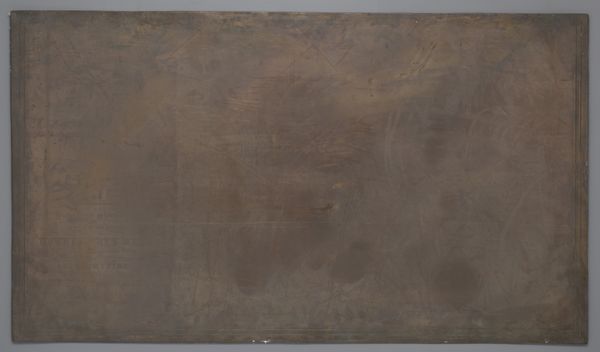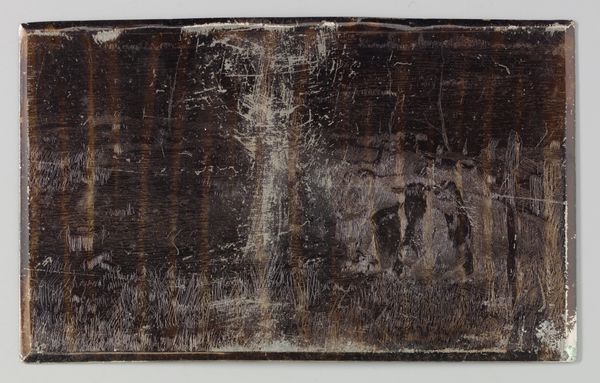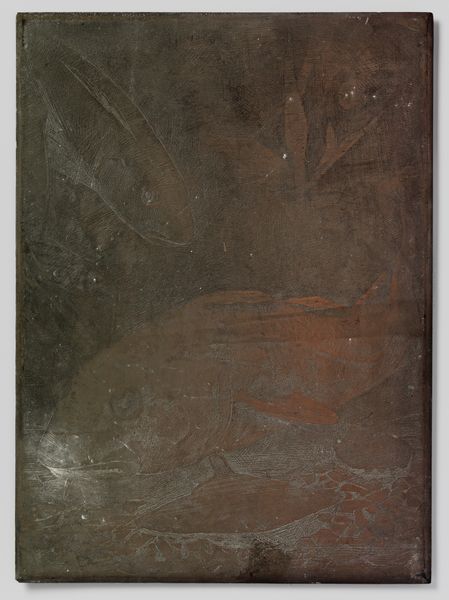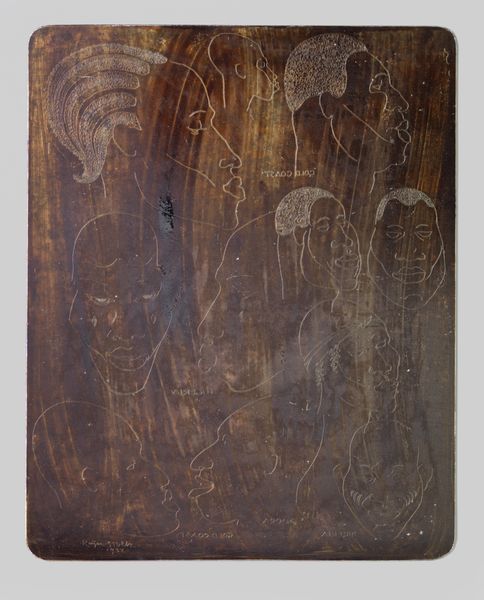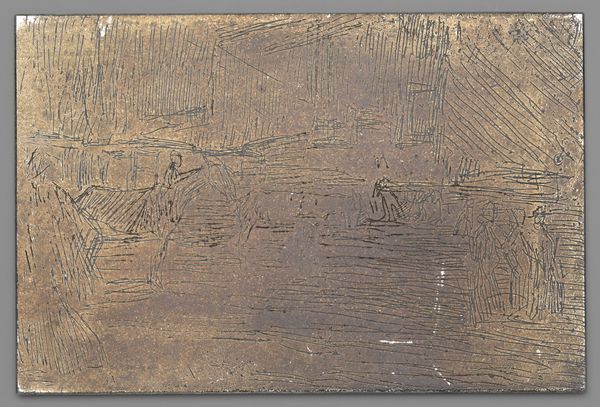
drawing, print, engraving
#
drawing
#
narrative-art
#
baroque
# print
#
genre-painting
#
engraving
Dimensions: 320 × 392 mm
Copyright: Public Domain
Curator: This is "Plate one, from A Harlot's Progress" by William Hogarth, created sometime between 1732 and 1744. It's an engraving, part of a series narrating the story of a young woman's life. Editor: My immediate impression is one of crowded, stifled space. The density of figures combined with the medium, this sepia-toned engraving, gives it a murky feel. Curator: The "Harlot's Progress" series captured a moment in history where rapid social and economic changes fueled anxieties about morality. Hogarth’s work reflected these concerns by illustrating the dangers faced by women navigating London society. He employed symbolic details as narrative shortcuts—visually encoding moral messages that would have resonated strongly with contemporary audiences. Editor: You can certainly read that narrative from the density of the composition and dramatic staging. Note how he’s organized the figures in the round: they frame the young woman who arrives from the country and is now being courted—or entrapped—by an older woman in fine dress. Light reflects off of her fair skin, calling attention to the implied contract or document held between the two central figures. The eye travels along that implied diagonal, creating visual tension, almost anxiety. Curator: The woman taking her glove evokes a sense of negotiation, hinting at the loss of innocence. The symbolism is layered, drawing on familiar iconographies but twisting them to fit his didactic purpose. A goose hanging overhead becomes a symbolic representation of her doomed fate. This single image already alludes to themes that span both cautionary and religious narratives. Editor: Yes, Hogarth's use of line and shadow creates an incredible range of emotional and psychological weight. The dense hatching models each figure while the careful staging turns the scene into almost a caricature of everyday London. Hogarth exaggerates what he sees. That angularity, the high drama of each posture, imbues the whole scene with intense narrative energy, really holding the viewer’s gaze. Curator: This piece offers insights into the cultural anxieties of 18th-century London—where gender, class, and moral ambiguity were brought into sharp relief, creating both scandal and reform. Editor: I found Hogarth's engraving particularly masterful for its use of contrast and composition.
Comments
No comments
Be the first to comment and join the conversation on the ultimate creative platform.
